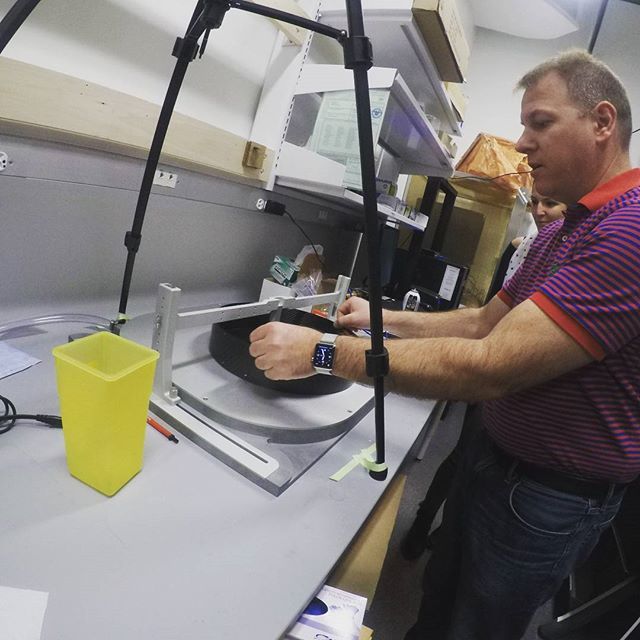Hi Mike great questions, I asked the same ones when I joined the lab.
First of all, we don’t know of a single gene encoding Alzheimer’s Disease. Some genes have been identified that increase the likelihood of developing the disease, but there isn’t an “Alzheimer’s gene.” My personal opinion on this matter is that Alzheimer’s Disease isn’t one isolated disease but is rather a kind of umbrella under which lie various pathologies that can lead to the observed symptoms and effects-- which makes sense of the lack of a single gene and the presence of “risk factor genes.”
So we don’t have a single easy gene, but there are many different ways to “model Alzheimer’s Disease,” and these various ways are reflected in different mouse model strains. For example; the stall videos you have seen are from a model that has been engineered to over-produce the human protein that ends up accumulating to form plaques, (a phenomenon that would never occur in mice naturally). Compare that technique to inserting a gene known to increase the chance of humans getting Alzheimer’s, to make a model useful in evaluating the role of that risk factor gene. Either way we are inserting human genes so at the protein/cellular level the results we see end up mapping to what we would see in a human fairly well.
There is always the possibility that the model is somehow different from a human brain but we have to start somewhere  as far as the stall phenomenon, our idea is to push forward clinical trials of drugs already deemed safe by the FDA that could confirm that the stall hypothesis holds true in humans, so that development of an ideal medication can begin and dissemination of the pre-approved and somewhat effective medication can happen in the meantime. StallCatchers will be used in analyzing the videos for this project (some of us are working on explanation videos for this project, keep an eye out for word on that as we may need some input!)
as far as the stall phenomenon, our idea is to push forward clinical trials of drugs already deemed safe by the FDA that could confirm that the stall hypothesis holds true in humans, so that development of an ideal medication can begin and dissemination of the pre-approved and somewhat effective medication can happen in the meantime. StallCatchers will be used in analyzing the videos for this project (some of us are working on explanation videos for this project, keep an eye out for word on that as we may need some input!)
The thing to note is that we are modeling what we see in human brains in the mouse brain, mice would never develop the disease themselves.
All that being said, the induced changes end up being a huge disadvantage to the mouse’s overall fitness (as in capability of reproducing and passing on the gene) and they would not survive in the wild. Also notable is that it takes many generations of mating specific pairs that express specific variants of the genes to actually get a model that displays the target effect, so it is very unlikely that whatever the altered gene is could ever make it into a wild population. As far as the predation question, the answer is no- the only way the gene can propogate is via specific mating within a very controlled environment.
These topics are continually discussed in the scientific community, and with better gene editing technology, it is absolutely imperative that people keep asking these questions and that the scientific community isn’t alone with these decisions. I strongly encourage researching these things and starting conversations (like you do) as much as possible. Every time I talk to people I get a perspective I hadn’t get considered and am again reminded how narrow the biological/chemical perspective can be and how important interdisciplinary discussion will be.
Please point out anything I missed or was unclear on.
 as far as the stall phenomenon, our idea is to push forward clinical trials of drugs already deemed safe by the FDA that could confirm that the stall hypothesis holds true in humans, so that development of an ideal medication can begin and dissemination of the pre-approved and somewhat effective medication can happen in the meantime. StallCatchers will be used in analyzing the videos for this project (some of us are working on explanation videos for this project, keep an eye out for word on that as we may need some input!)
as far as the stall phenomenon, our idea is to push forward clinical trials of drugs already deemed safe by the FDA that could confirm that the stall hypothesis holds true in humans, so that development of an ideal medication can begin and dissemination of the pre-approved and somewhat effective medication can happen in the meantime. StallCatchers will be used in analyzing the videos for this project (some of us are working on explanation videos for this project, keep an eye out for word on that as we may need some input!)